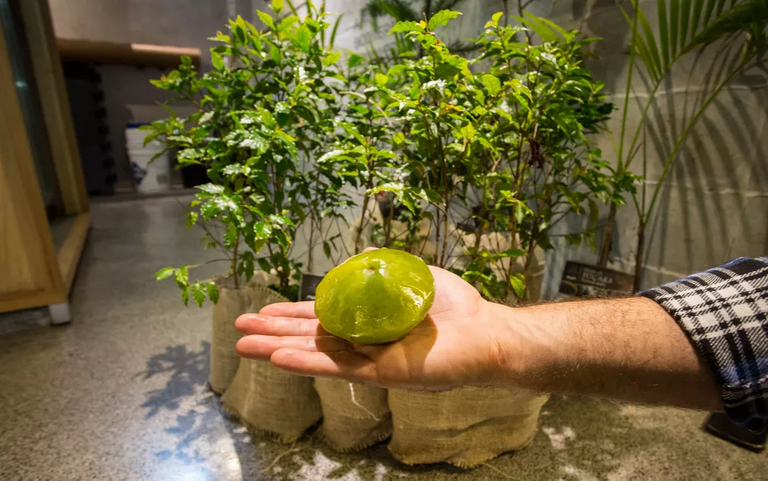Exotic Fruit from Brazil - Cambuci (Campomanesia phaea)

The cambucizeiro is a tree of the Atlantic Forest, whose fruit is ovoid-rhomboid in shape and divided in half by a horizontal ridge. The name cambuci arose due to the appearance of vases and pots used by the Tupi and called kamu'si. A semideciduous tree, of the family of the mirtaceae and relative of fruits such as guava, jabuticaba and pitanga, can reach a height of 8m, with a pyramidal canopy, smooth and detachable trunk and elliptical leaves.

The fruits, green and thin, ripen between January and April and it is possible to know that they are ripe because they become softer and more yellowish, and fall off the branches. The berries are about 6cm in diameter, creamy, juicy and few seeds, and extremely acidic. Although not the type of fruit consumed in natura, it has characteristic perfume and flavor that makes it a popular flavoring of cachaça since the colonial period, one of its main applications to this day.

A source of antioxidants and tannins that fight free radicals, the fruit helps to slow aging and strengthen the immune system, as well as being rich in fiber and vitamin C. Cambuci is also very popular with animals such as jaú, pacas, monkeys and toucans, however seed dispersal through these frugivorous animals does not occur at an adequate rate for the species' maintainability in the woods.

Fortunately, the tree is grown in domestic orchards in cities such as Salesópolis, Biritiba-Mirim and Paranapiacaba, among others with remnants of Atlantic Forest, whose residents are encouraged to plant them in their backyards, thanks to the newfound discovery that there are more uses for them. cambuci than soda cachaça, thus serving as an alternative for economic and sustainable growth for these municipalities.

In Paraíbuna, for example, it is possible to enjoy ice cream and cambuci syrup, as well as selling the fruit in the city's markets and other points along the Tamoios highway. The culinary diversity employing the fruit is not new, as there are reports that residents of old São Paulo harvested the fallen fruit in their backyards after summer rains to prepare jellies, juices and brandy seasoning. This culture, however, was lost with the arrival of pollution and the disappearance of these backyards and native green areas, which gave way to smaller apartments and houses.
